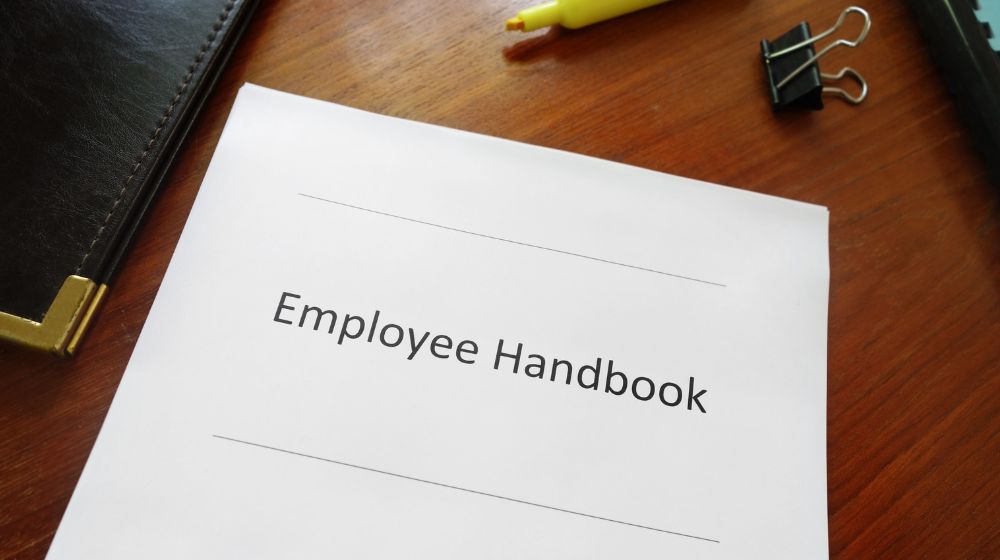


Written by Vivian Chen, Marketing & Communications Manager, EU SME Centre
Understanding how to effectively manage a local team and make HR rules clear from the beginning is important for companies operating in China. Having a well-structured and practical employee handbook can be very helpful in this aspect. It is a valuable document to have in managing everyday employment situations between employees and employers, and an important source of information and evidence when handling cases of labour disputes.
The EU SME Centre recently published a new guide – Preparing an Employee Handbook in China, which explains in detail the essential elements that should be included in the handbook and shows examples on how to make accurate social insurance calculations. Below is an overview of the key elements for a standard employee handbook in China.
Register on our website today and keep yourself updated with more China business intelligence.
1. General Behaviour – Rules about the general behaviour of employees should be included, covering discipline, company property and disciplinary punishment. Regulations on discipline at work cannot be included in the employment contract, but can be included in the employee handbook. Forbidden behaviours such as harassment or discrimination should be clarified in this section.
2. Standards for Recruitment Procedures – The detailed recruitment procedure and standards should be elaborated in the employee handbook. First, it provides guidelines for both parties (employer and candidate/employee) about the recruitment procedure and requirements and, secondly, it may serve as the basis for additional labour-related procedures. A definition of “unqualified” should be incorporated into the employee handbook, which depends on the position and business scope, and must to be defined on a case-by-case basis.
3. Workplace Security – Clarifies rules concerning workplace security and safeguard, safety production, fire prevention and accident handling, depending on the type of industries.
4. Working Hours and Overtime – Under current Chinese employment laws and regulations, there are three types of working hour systems – standard working hour system, comprehensive working hour system and non-fixed working hour system. The employee handbook should clarify the type of working hour system that is followed by the company. In addition, an employee in China is entitled to overtime payments for work exceeding the statutory working hours, but the calculation varies under the different working hour systems.
5. Holidays and Leave – Provides an introduction to the public holidays in China, rules on paid annual leave and other types of leaves and internal approval procedure for leave application.
6. Remuneration Standards – Under current Chinese labour-related laws and regulations, an employer has the liability to pay the employee’s salary or overtime payments for work performed as well as contribute to the statutory social insurance fund. From the employees’ point of view, they want to be correctly paid for the work performed, bonus pay, and other kinds of benefits, and at the same time, they want to structure their salary package in a legal way to optimise their individual income tax burden.
7. Staff Performance Assessment Procedures – Elaborates the procedures in areas including legal termination by an employer, salary and position adjustment, performance assessment standards and signed performance assessment. Staff performance assessment is one of the most important functions in human resource management and therefore needs to be incorporated into the employee handbook.
8. Confidentiality and Non-Compete – Includes information on scope of confidential information, employees subject to confidentiality, consequences of breaching a confidentiality agreement and a brief introduction on non-compete terms.
In accordance with China’s New Employment Contract Law, an employer can stipulate in the employment contract that the employee should keep confidential the information of the employer such as commercial secrets and intellectual properties. Furthermore, the employer can state that employees with a confidential liability must abide by the non-compete obligations.
9. Termination – Since the New Employment Contract Law was enforced in 2008, it is not easy for an employer to unilaterally terminate an employment contract before its expiration. In accordance with the Chinese regulation, there are 14 legal reasons for which an employer can unilaterally terminate an employment contract; otherwise, it will be deemed an illegal termination. It is therefore very important to provide greater details on these legal reasons in the employee handbook in order to use them in a broad way.
10. Labour Union – Covers information on the All-China Federation of Trade Unions (ACFTU), formation of a labour union, rights and responsibilities of a labour union, labour union fees and company obligations for setting up a labour union.
Looking for more information? Find them in our guideline Preparing an Employee Handbook in China.